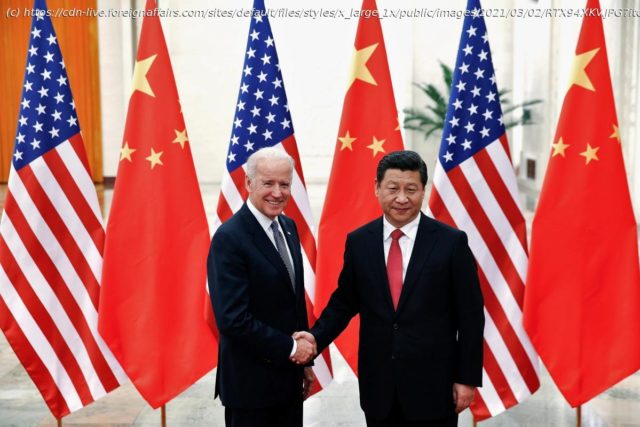Policymakers in Washington must be able to distinguish between the image Beijing presents and the realities it confronts.
China, the story goes, is inexorably rising and on the verge of overtaking a faltering United States. China has become the largest engine of global economic growth, the largest trading nation, and the largest destination for foreign investment. It has locked in major trade and investment deals in Asia and Europe and is using the Belt and Road Initiative—the largest development project of the twenty-first century—to win greater influence in every corner of the world. It is exporting surveillance tools, embedding technology in 5G communications networks, and using cyber-capabilities to both steal sensitive information and shape political discourse overseas. It is converting economic and political weight into military might, using civil-military fusion to develop cutting-edge capabilities and bullying its neighbors, including U.S. allies and partners such as Australia, India, and Taiwan. And at home, it is ruthlessly cracking down everywhere from Hong Kong to Xinjiang, with little concern about criticism from the United States and other democratic governments. Among the most eager purveyors of this story line are China’s government-affiliated media outlets. Projecting self-assurance, they have also gone out of their way to contrast their own achievements with plentiful examples of American dysfunction. They point to images of insurrectionists storming the U.S. Capitol and of American citizens standing in line for water during power outages in Texas as evidence of the decay of “Western democracy.” They celebrate China’s success in “defeating” COVID-19 and reopening the country, while the United States and other Western countries still struggle to stop the spread of the virus. “Time and momentum are on our side,” Chinese President Xi Jinping declared in a speech at the Communist Party’s Fifth Plenum last fall. In January, Chen Yixin, a top security official, told a Chinese Communist Party study session, “The rise of the East and decline of the West has become a trend.” Authoritarian systems excel at showcasing their strengths and concealing their weaknesses. But policymakers in Washington must be able to distinguish between the image Beijing presents and the realities it confronts. China is the second most powerful country in the world and the most formidable competitor the United States has faced in decades. Yet at the same time, and in spite of its many visible defects, the United States remains the stronger power in the U.S.-Chinese relationship—and it has good reason to think it can stay that way. For all the obstacles facing the United States, those facing China are considerably greater. During the Cold War, Secretary of Defense James Schlesinger cautioned against “ten-foot-tall syndrome”: the tendency among U.S. policymakers to view their Soviet competitors as towering figures of immense strength and overwhelming intellect. A similar syndrome has taken hold in the United States today, and the harms are not just analytical. Concentrating on China’s strengths without accounting for its vulnerabilities creates anxiety. Anxiety breeds insecurity. Insecurity leads to overreaction, and overreaction produces bad decisions that undermine the United States’ own competitiveness. Seeing China clearly is the first step toward getting China policy right. China poses the most direct test of U.S. foreign policy in decades. Not since the Cold War has a country seriously contested U.S. leadership in multiple regions of the world simultaneously. The combination of military strength, economic weight, and global ambition makes China a different—and more complex—challenge than the Soviet Union presented during the Cold War. In recent years, Beijing has made plain its revisionist ambitions. It seeks adjustments to the distribution of power in the international system, the security order in Asia, the role and remit of international institutions, the free flow of uncensored information across borders, and the liberal nature of the existing international order. It wants its Leninist political model and state-led economic model to be accepted and respected. It has signaled that it will brook no challenges to its conception of its territorial boundaries or its management of domestic affairs.






